1. Introduction: Rethinking Reinforcement
When constructing industrial-grade floors, performance, longevity, and efficiency often pull against each other. But what if the foundation could support all three — and do it sustainably?
In this warehouse project, we achieved just that by swapping traditional TMT
(Thermo-Mechanically Treated) steel bars with GFRP rebars. The results were game-changing — technically, financially, and environmentally.

2. Why GFRP? A Shift in Structural Thinking
2.1 What is GFRP?
Glass Fiber Reinforced Polymer (GFRP) is a composite material made of plastic reinforced by fine fibers of glass. Unlike steel, it doesn’t corrode, making it ideal for applications exposed to moisture, chemicals, and long-term stress.
2.2 GFRP vs. TMT Steel:
When comparing GFRP rebars to traditional TMT steel bars, the advantages are clear. GFRP offers up to twice the tensile strength of steel while being 70% lighter, making it far easier to transport and handle on-site without the need for heavy machinery.
Unlike TMT steel, which is prone to corrosion over time, GFRP is completely rust-proof—ensuring longer durability and reduced maintenance. It’s also non-magnetic, eliminating any interference with sensitive equipment or electronic systems.
Most importantly, its lifecycle costs are significantly lower
since it doesn’t require the frequent repairs or replacements often needed with corroded steel reinforcements.
This makes GFRP a superior, future-ready choice for long-lasting infrastructure.
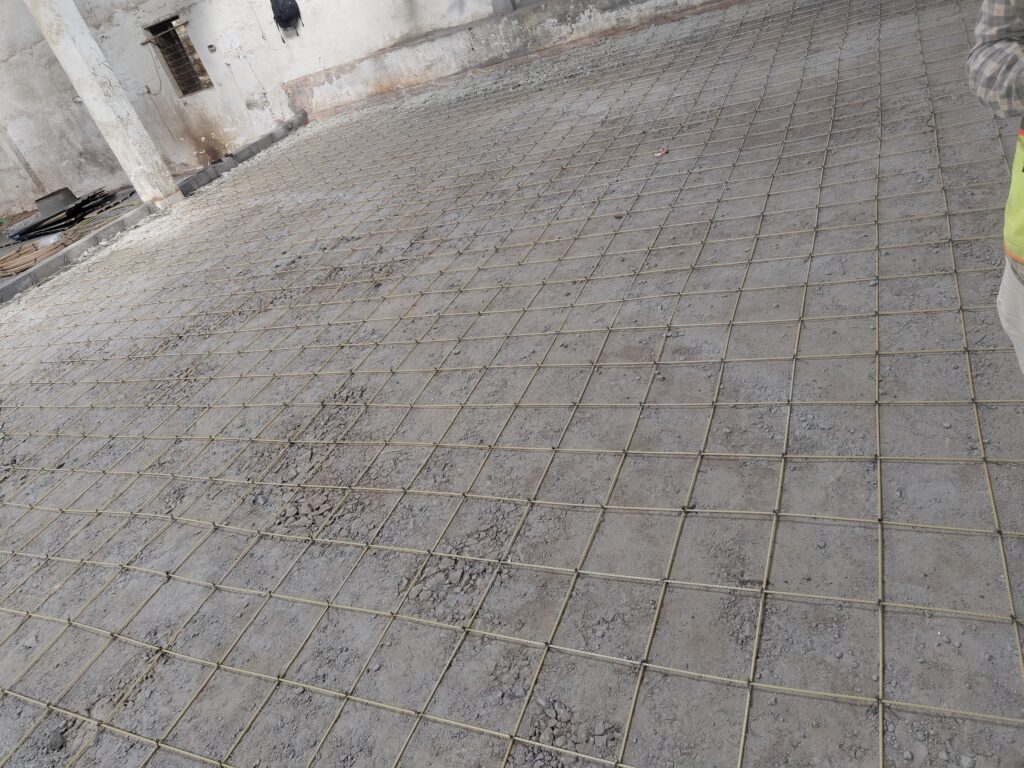
3. Project Execution
3.1 Site Preparation
We began by clearing and grading the site, ensuring a level surface to maintain structural integrity and prevent stress cracks in the future.
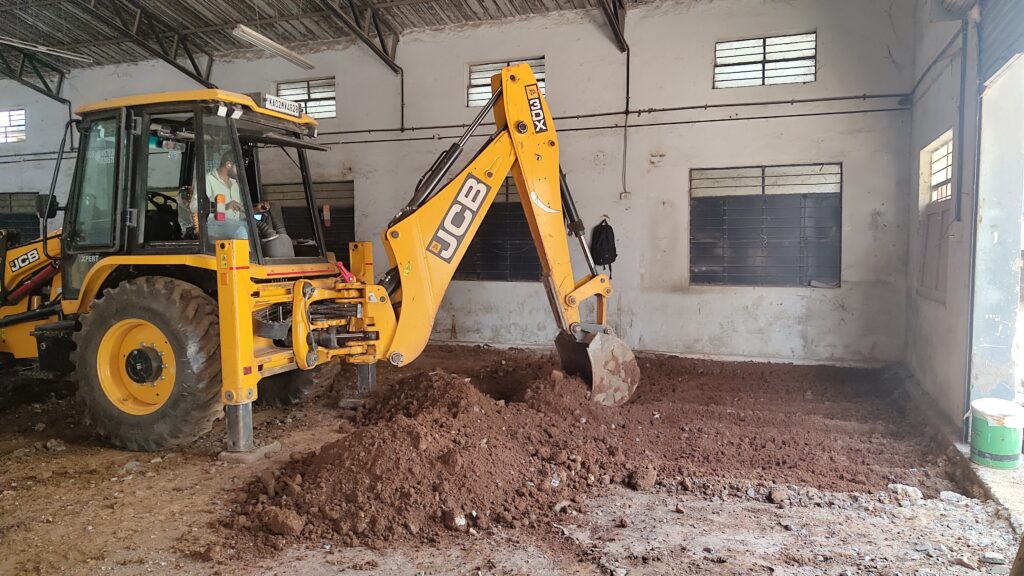
3.2 Sub-Base Layer
A thick layer of compacted granular sub-base was laid to provide a solid foundation and distribute loads uniformly.

3.3 Placement of GFRP Rebars
The defining phase. Instead of tying steel bars manually, we placed lightweight GFRP rebars in a crisscross grid, supported by cover blocks to maintain even spacing.
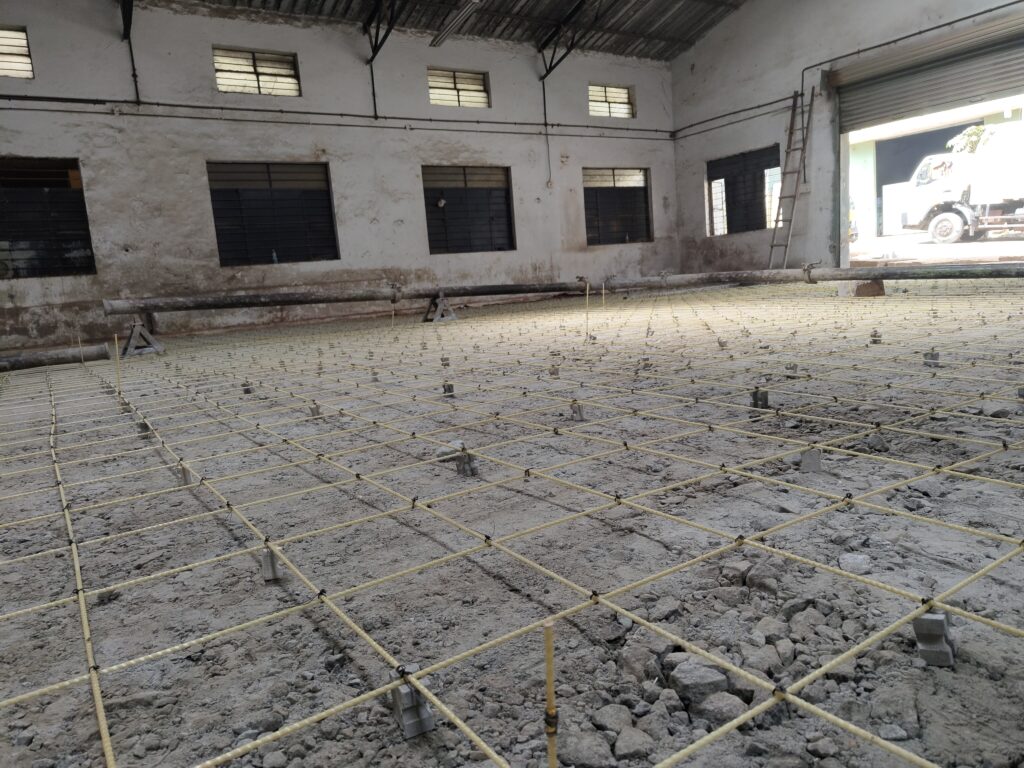
3.4 Concrete Pouring
High-performance concrete was poured over the GFRP grid, ensuring optimal binding and surface finish. Vibration and laser screeding ensured minimal voids and a perfectly level finish.

3.5 Surface Finishing & Curing
Post-screeding, the surface was finished with a trowel and left for initial setting. Curing was then done with water and protective sheets to avoid surface cracks.
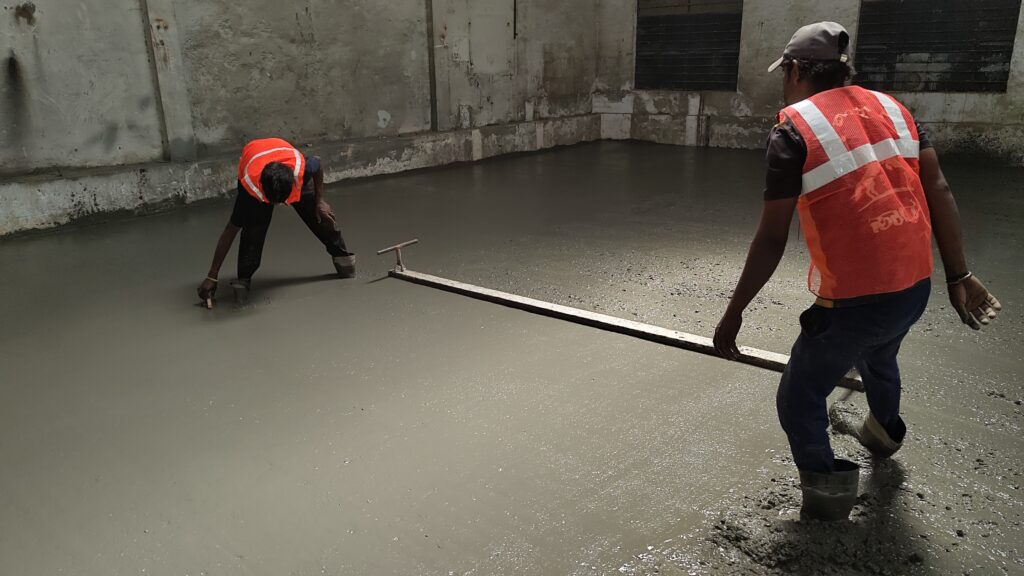
4. Measurable Gains and Impact
4.1 Cost Savings
Switching to GFRP resulted in a direct ₹1 lakh saving on reinforcement material — a significant reduction on a warehouse budget, without compromising quality.
4.2 Sustainability
● Lower Carbon Footprint: GFRP doesn’t require the high-temperature processes that steel manufacturing does.
● Rust-Proof Durability: Prevents future maintenance or replacement due to corrosion.
● Light Transport Load: Fewer trips and reduced fuel usage during logistics.
4.3 Technical Performance
● Higher load resistance under pallet jack and forklift movement.
● No deformation or rust flakes, ensuring safer working environments over the long term.
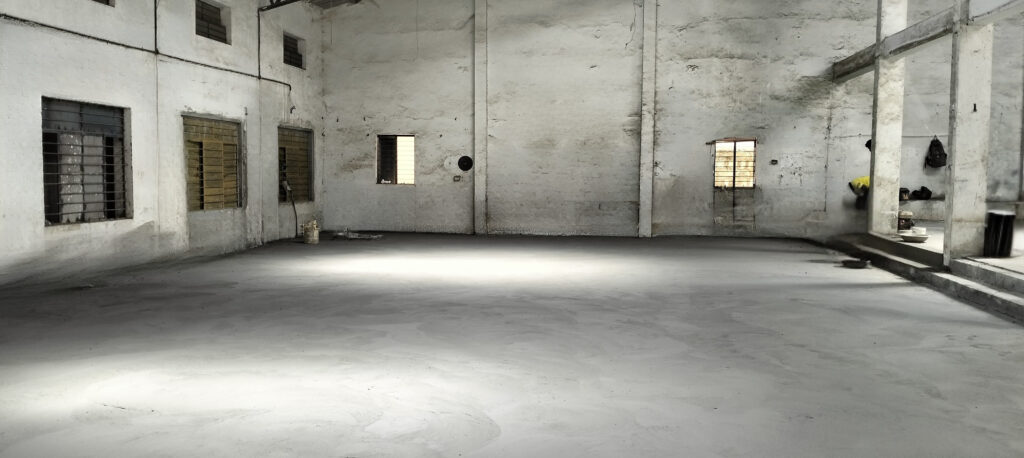
5. Our Vision Going Forward
At EcoPath, we’re not just building surfaces — we’re creating smarter systems that honour the planet, reduce long-term costs, and outlast expectations.
This project is a testament to what happens when innovation meets intention.
By rethinking materials, we’re not just improving construction — we’re reshaping its future.
From heavy-duty warehouses to quiet residential spaces, GFRP is showing us a better way forward. And we’re proud to be at the forefront, proving that strength and sustainability can go hand in hand.

Leave a Reply